Pilgrimage in Kyoto? As you know, Kyoto has a lot of sightseeing spots, such as Kinkakuji temple, Kiyomizudera temple, Bamboo forest in Arashiyama and Fushimi-Inari shrine. Each is absolutely stunning, but at the same time, always crowded. You might be overwhelmed with the crowd. Today I’d like to take you off the beaten track in Kyoto. What would you say to going on a hike walking around 88 small temples? It’s a mini-Ohenro in the back of Omuro Ninnaji temple.
What is Ohenro(お遍路)?
Ohenro is the Japanese word for pilgrimage. The Shikoku(四国) Pilgrimage Route is the most famous in Japan. It includes 88 temples associated with Kukai( 空海=Kobo Daishi), and is approximately 1200 kilometers long and can take about 50 days to complete on foot.
Ohenro- Omuro 88 Temples Pilgrimage Hiking
This hiking course is located behind Ninnaji temple and modeled after the 88 Temples Pilgrimage Route in Shikoku. This route was built in 1827 for those who could not make the long journey to Shikoku in those days. When you complete the walk, you can get the same blessing as the Shikoku Pilgrimage. Why not try it?
- distance : about 3km(2miles)
- time taken : 1.5 to 3 hours
- fees : free
- hours : always open
- access : the nearest bus stop “Omuro Ninnaji “
My hike!
I visited the pilgrimage hiking course on a weekday in March for the first time in years. Kobo Daishi welcomes us at the starting point. Soon after praying at the first temple and starting to go up a gentle slope, the next (No.2)temple came into sight. Each temple is 10 to 20 meters apart. So you won’t miss the route. There is a tiny stone pillar with the number, the temple’s name and the principal Buddhist image of the temple in front of each one.
☆how to read Chinese numerals
一 → 1 十一 → 11
二 → 2 十二 → 12
三 → 3
四 → 4
五 → 5 二十 → 20
六 → 6
七 → 7
八 → 8 三十六 → 36
九 → 9
十 → 10 七十九 → 79
Each temple has two small statues inside the lattice window. One is Kobo Daishi (left) and the other is its main Buddhist image (right).
Taking a walk up the slow slope, an elderly man was coming down toward me and started talking to me. He was going through the route in reverse (from No.88 →1). Although we don’t need to visit the temples in order, to be on the safe side, I recommend to keep on the route starting from No.1 and ending at No.88. It’s easier to notice the sign “順路”, which means “This way”.
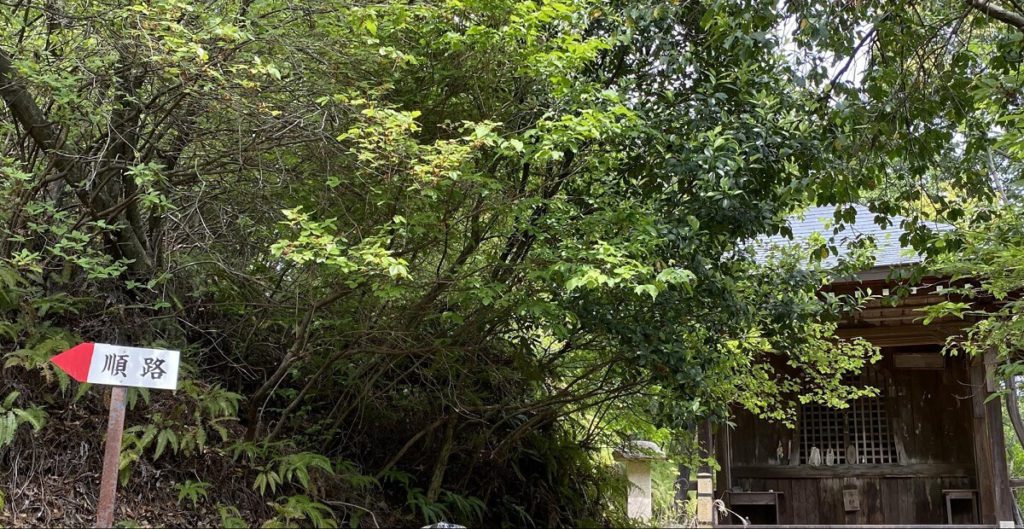
Back to the story of the man, he said that he comes here to walk for exercise almost every day, and he has been here around 3000 times so far. He continued to say, “Look up at the ceiling of No.37 temple, and you can see flowers painted on it. And don’t miss a dragon carved on the lintel as well. ”He went on saying, “Of all the temples, only No.41 is hexagonally-shaped. Go around the temple clockwise 3 times and pray. You could live your entire life without any help from others.” I’m not sure if his stories are valid. It’s up to you whether you believe them or not.
After leaving him, I proceeded to the path repeating the numbers, “37,41 37,41,37,41… “ in my mind, while enjoying birds chirping, a pleasant breeze and forest bathing.

There, I was finally at No.37! “Oh my!! What does this temple have? What am I supposed to do here?” It slipped my mind!! I carefully looked around each part of the temple. Looking up at the ceiling, I found the pictures of flowers and then noticed the dragon on the lintel. Phew!! I almost overlooked them!

Further up the mountain path, there are some spots offering nice views of Kyoto city.
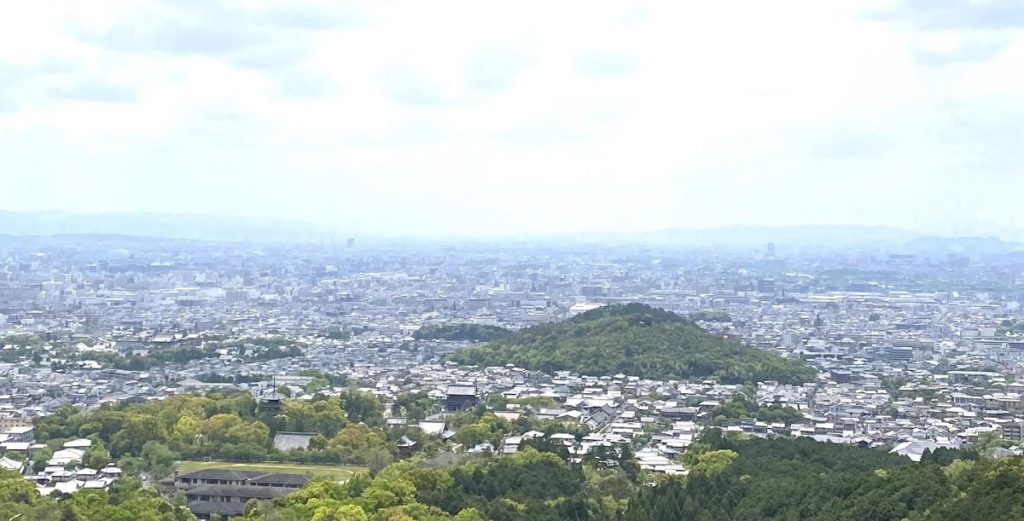
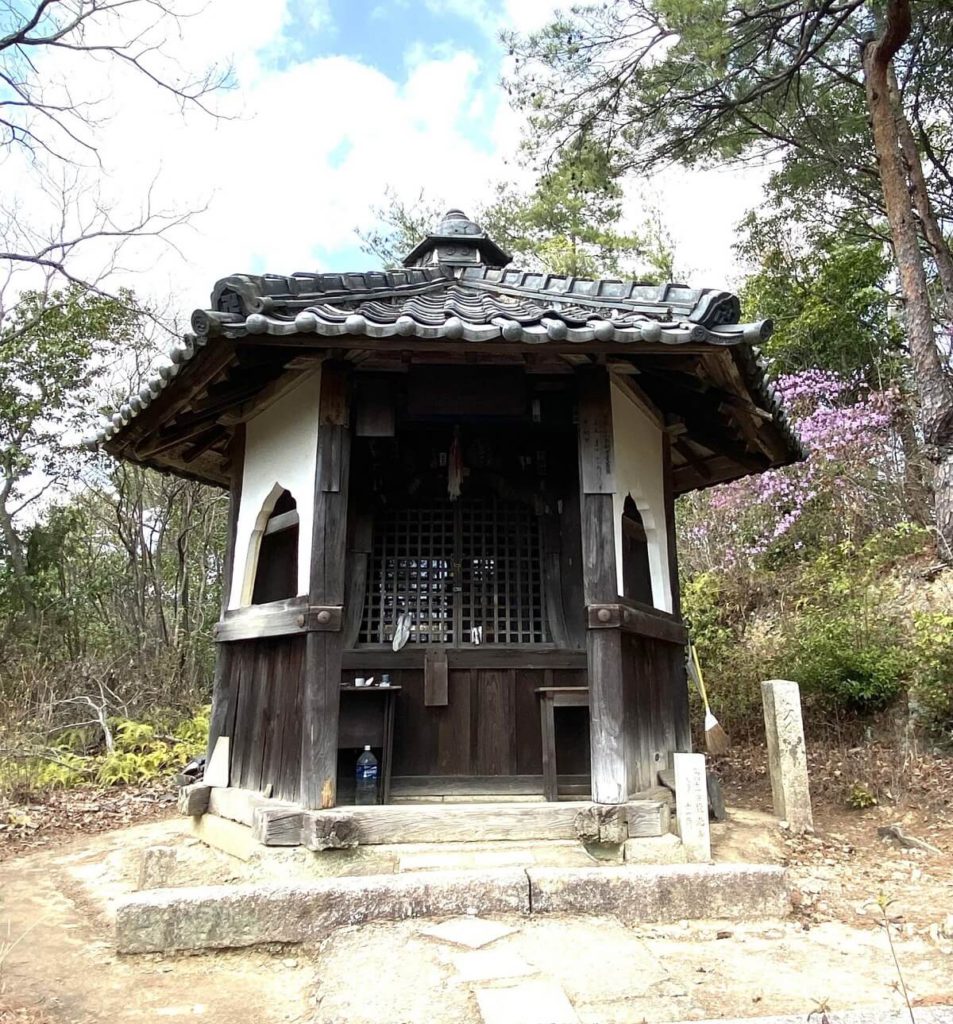
There it was, No.41! I remembered what to do there. Yes! I went around the hexagonal temple clockwise 3 times and prayed for my family to live long in good health.
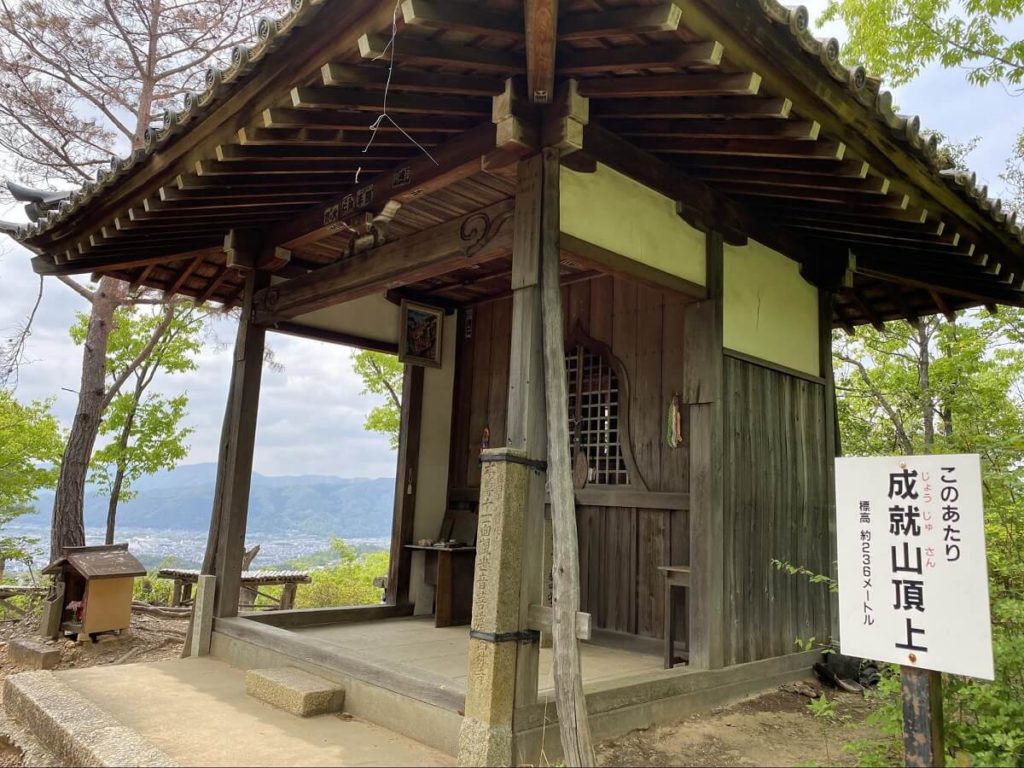
Yeah! I reached the mountaintop! The sign by the No.48 says that this spot around here is the top of this mountain “成就山” (Jojusan, Mt. Joju), which has an altitude of about 236 meters. There are benches next to the temple, and the view in the direction of Kyoto city spreads out before us.
I took a break there and ate some snacks.

As you can see, Kyoto city forms a basin surrounded by mountains. And unlike Tokyo, Osaka and other big cities, it has neither any high buildings nor conspicuous signboards. Now you know that Kyoto has strict building codes!
This is also a unique temple(No.53) built on top of a rock. It looks kind of adventurous to climb up the rock using a chain. Watch your step as wet rocks are slippery. You can also reach the temple from behind to avoid the rock climbing.
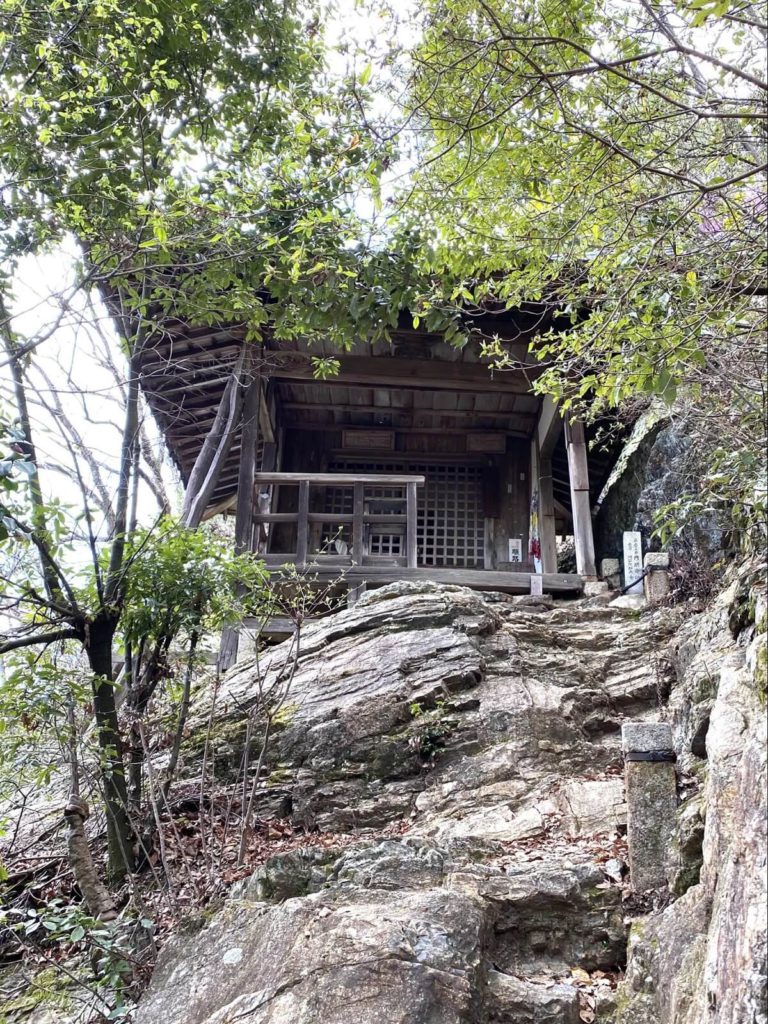
Following the arrow, I passed through the narrow path leading to No.54.
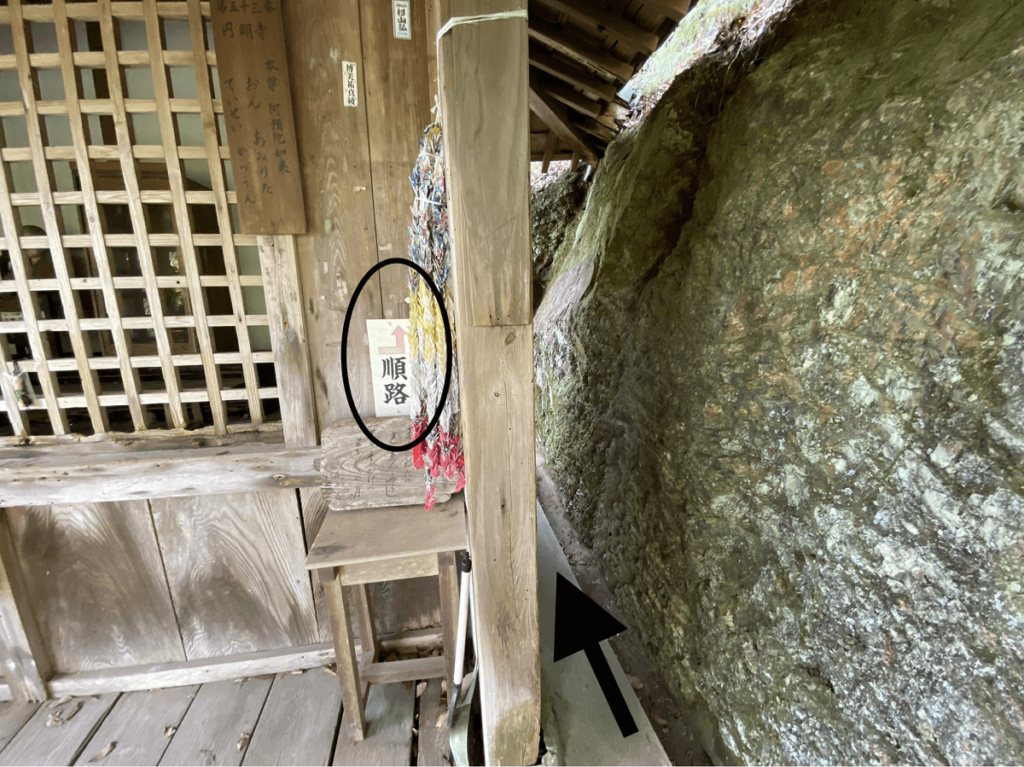
Enjoying the atmosphere, I continued to walk on a gradual downward slope. I heard the sound of water as I headed toward No.64 and a pond came into view.
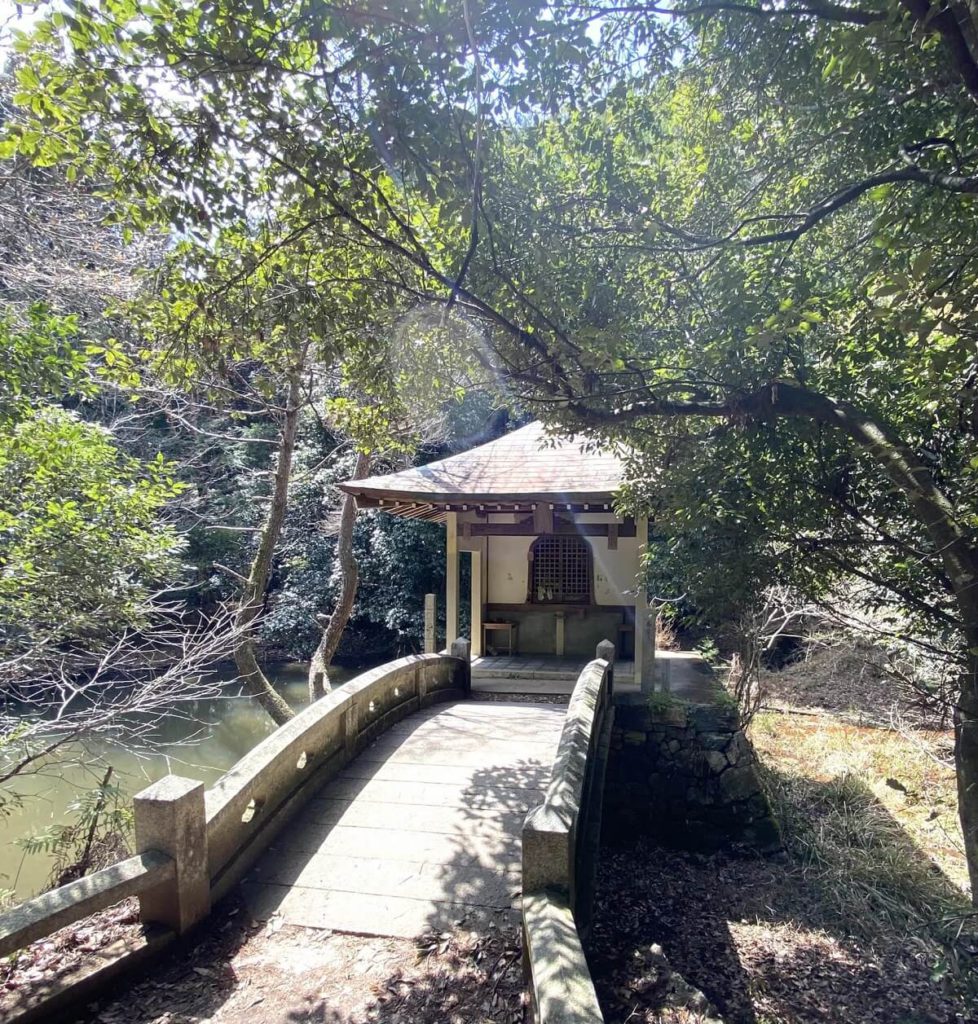
There it was, No.68 built on the pond. Walking downhill, I found myself on the almost flat road around No.80. Passing by another pond on the right, I was almost there!
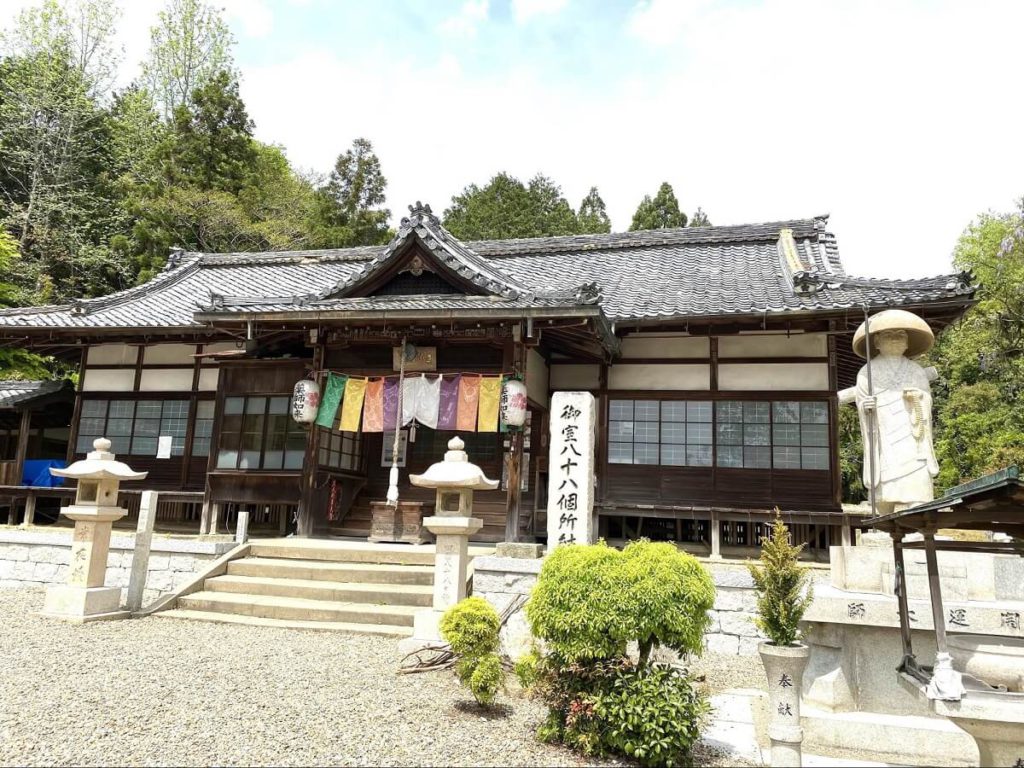
There it was! I finally completed all the 88 temples! Kobo Daishi meets us again here saying, “Welcome back from your Ohenro!” I prayed for future happiness and ended my hike.
I’m not so religious, so I prayed at few temples. I was focused more on the hike and taking pictures. It was about a 2-hour walk. I really felt refreshed.
How about stepping away from tourist areas and refreshing yourself on this Omuro 88 Temples Pilgrimage Hiking?
-Tips-
- A public restroom and a vending machine are provided only at the starting point.
- Need to wear shoes that are easy to walk in.
- There is usually a monthly “Stamp rally” event, at which visitors can collect stamps.
- Be sure to visit Omuro Ninnaji as well. It is one of the greatest temples in Kyoto. For more information, please click the link below.
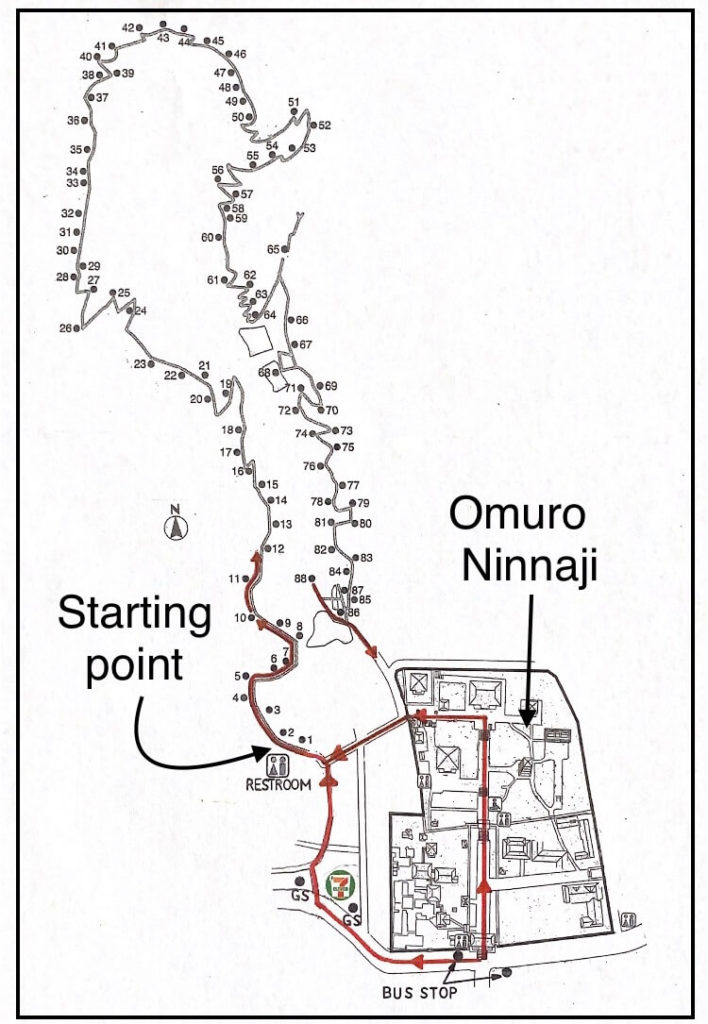
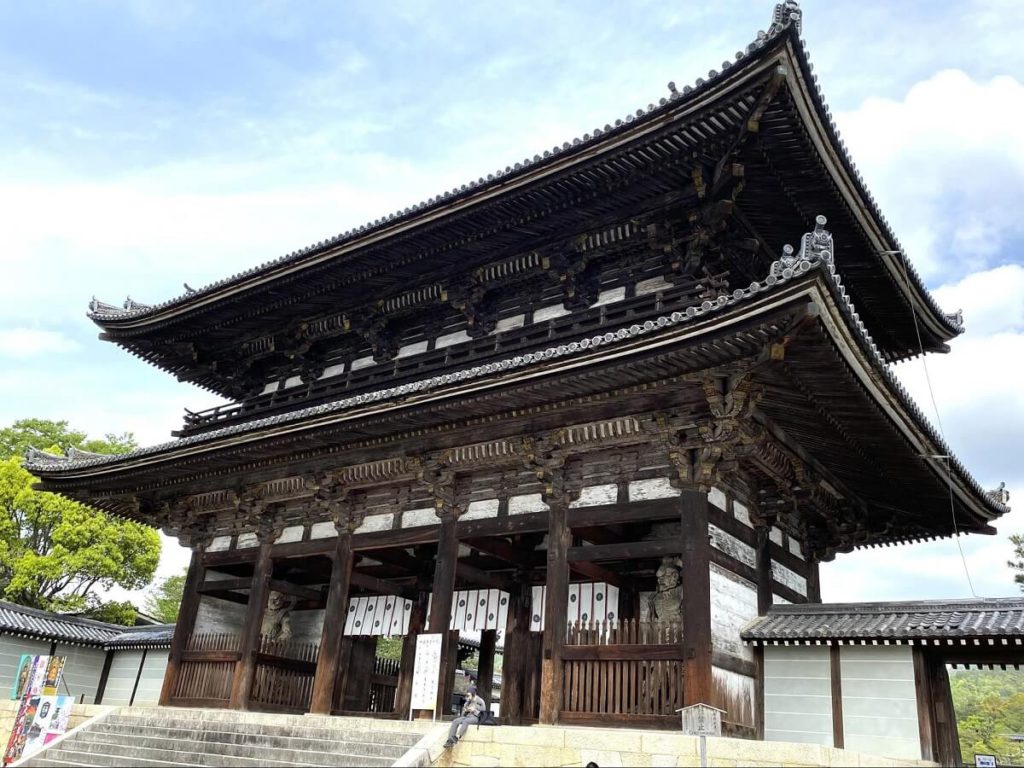
Ninnnaji
https://ninnaji.jp/en/
Born and raised in Kyoto. A private tutor and a volunteer tour guide in Kyoto. Love sewing, kimono remaking, traveling, cooking, gardening, playing the shamisen(三味線), making stained glass and grandparenting as well.



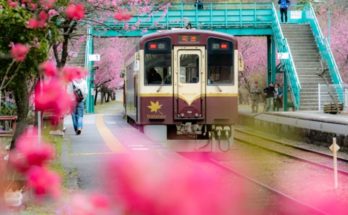
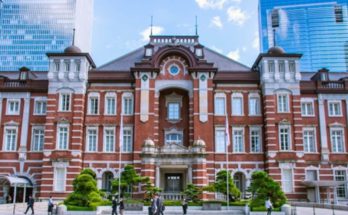
Hi Reiko. I enjoyed your article. I never knew there was an 88 temple ohenro in Kyoto, and you can walk it in a couple of hours! I’ve definitely got to try it next time I go to Kyoto. Thanks for the article. Well done.
Hi Andy. Thank you for reading my article and also I’m really happy to get the comment from you. It’s kind of surprising that the Ohenro is in the center of Kyoto city, isn’t it!? Besides it’s very unknown. I hope you enjoy yourself in there down the line.
Nicely done Rieko! And the introduction to Japanese numbers was helpful. I’ve looked into the 88 temple pilgrimage. This is much more doable!
I so enjoyed your companonship and guidance in the ancient city of Nara. Maybe Nara could be another blog topic?
Hi Cathie! Thank you for reading my blog! Now you know how to read Japanese numbers,right? I’d like visitors from abroad to know more about Japan through our blogs.Maybe I think I know about Kyoto more than Nara😆. If I have any chances, I’d like to show some secret spots in Kyoto.
Hello Rieko!
Thank you for sharing this interesting information about Ohenro. We look forward to visiting when we are able to travel to Kyoto.
Hello Sharlene!
Thank you for reading my article.
If you are interested in Ohenro, this course is very easy to accomplish!
I look forward to meeting you in Kyoto as soon as possible!
I just did the mini Ohenro for the second time. I wish I’d read this before though. I’ll have to do it a 3rd time now to see the dragon and flowers. 🙂
Great blog post. Very well written with excellent info. Thank you!
Hello John!
Thank you for your comment! It’s a nice hiking course, isn’t it?! You live in Kyoto or something? If so, please check out my second blog about Fushimi Inari Shrine when you get a chance😄‼︎